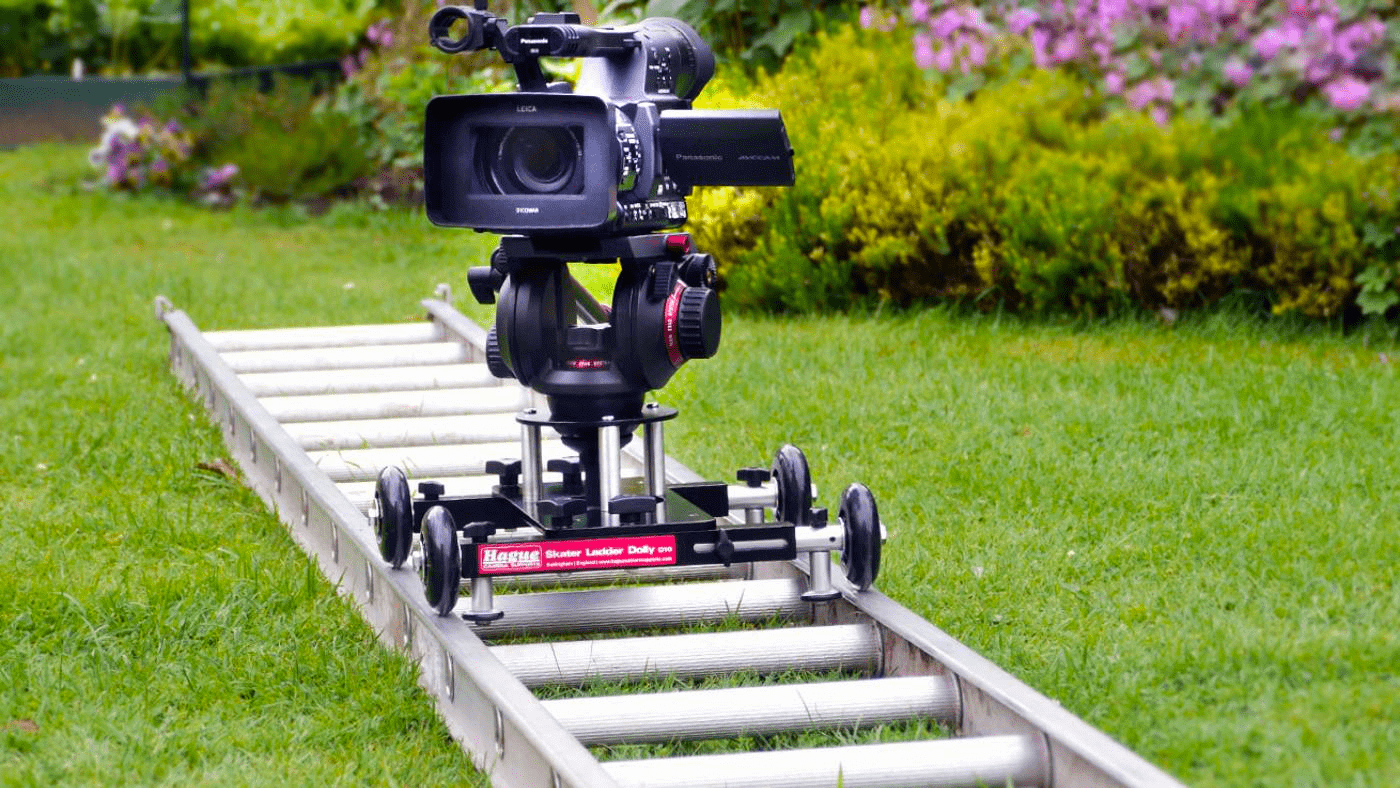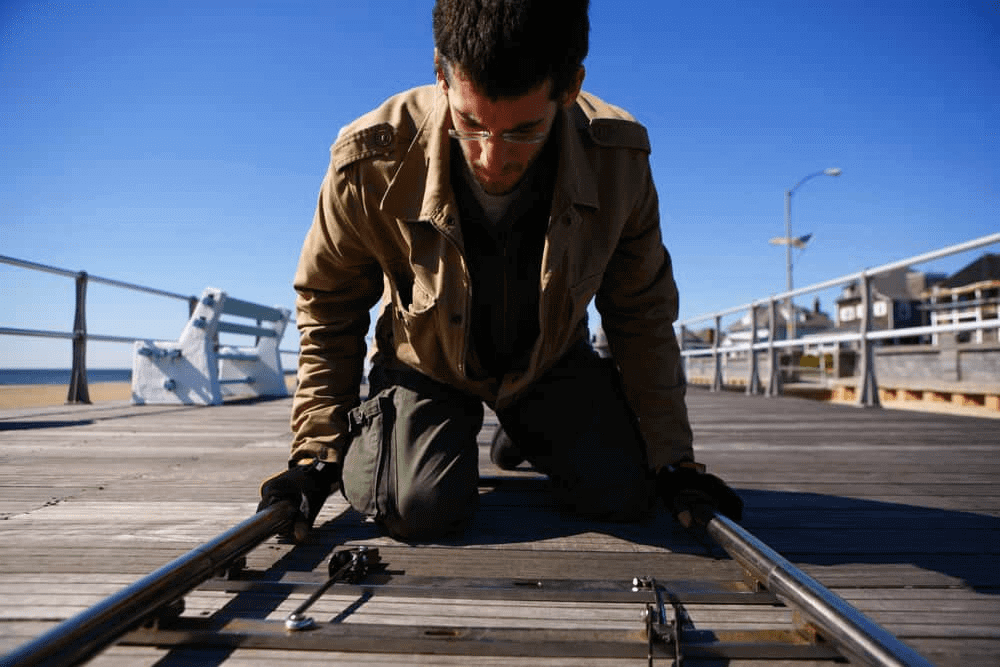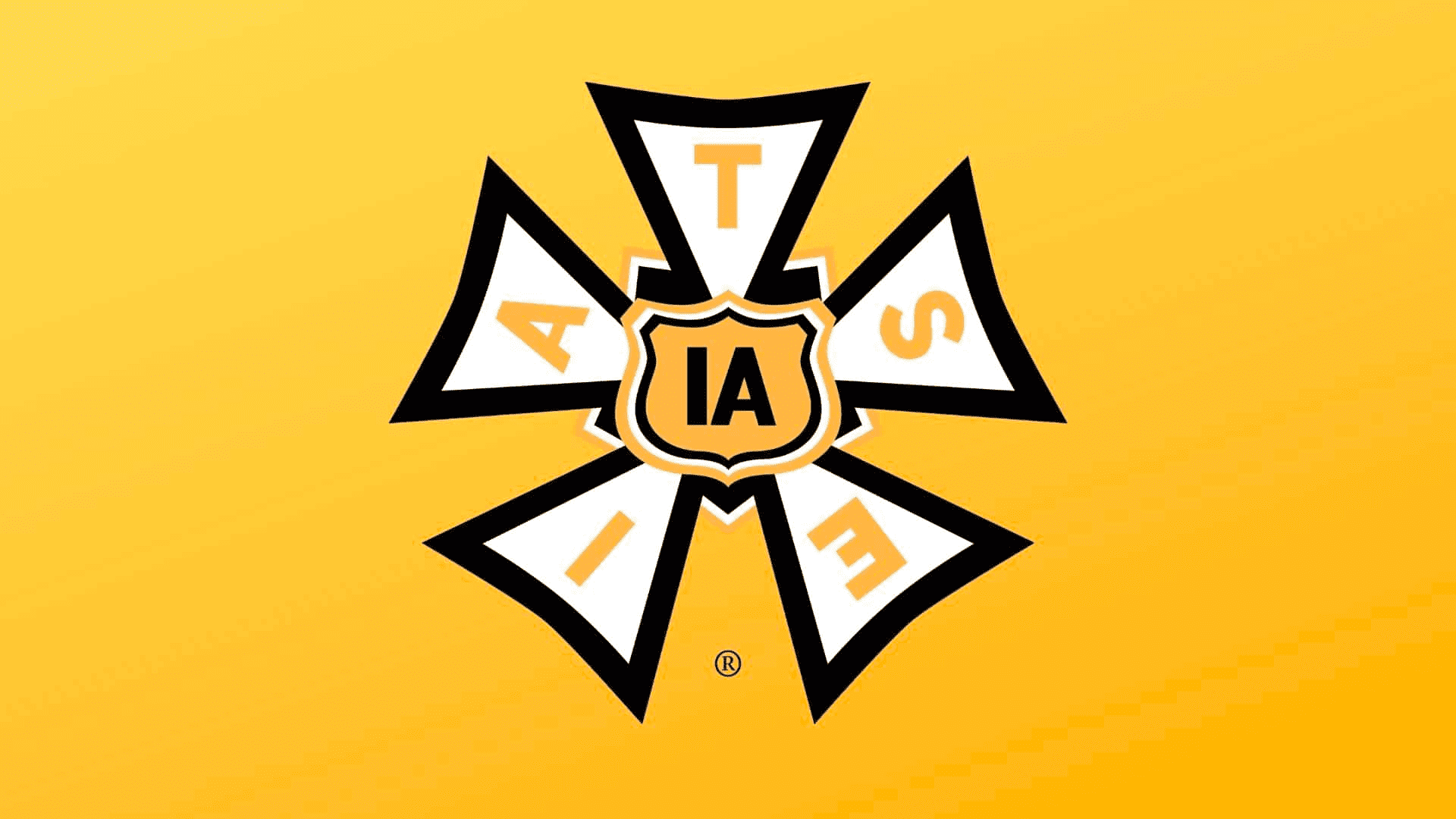Some of the most iconic scenes in film history owe their visual mastery to a singular piece of equipment — the camera dolly. Yet, the true magic does not solely lie in the tool itself but in the hands of its creative and adept operator, the often unsung hero of the film world — the dolly grip. Let’s delve into the world of dolly grips, the wizards behind the wheels who bring motion to our movie experiences.
What is a Dolly Grip in Film Production?
First, let’s define dolly grip
The dolly grip is not just a master of hefty carts and camera mounts, but also an architect of cinematic motion. Let’s look at the definition of the dolly grip in film production.
DOLLY GRIP DEFINITION
What is a dolly grip in film?
A Dolly Grip is responsible for operating the camera dolly, which is a wheeled cart or similar device used in filmmaking to create smooth, horizontal camera movements. The dolly grip's job is to ensure that the dolly movement is seamless during shots, giving us those fluid scenes we love in our favorite movies.
Now, let's take a quick trip down memory lane. The term 'dolly grip' emerged from the early days of Hollywood. The "dolly" part comes from the name of the equipment they operate, and "grip" is a term borrowed from the theatrical stage crews of the past who would physically "grip" or handle various pieces of equipment.
The role of the dolly grip evolved as film technology advanced. In the silent era of film, cameras were static, but as filmmakers sought to add dynamism to their scenes, the camera began to move. The dolly was invented to facilitate this movement, and thus, the dolly grip became a staple on film sets.
Dolly Grip Duties:
- Positioning the dolly
- Managing camera movements
- Maintaining equipment safety
Dolly Grip Job Description
What does a dolly grip do in film?
The magic of cinema is not soley the outcome of skilled actors and visionary directors. It's also the result of a highly coordinated team of professionals working behind the scenes. One such unsung hero in the film production process is the dolly grip. But what exactly does a dolly grip do?
Setting Up and Operating the Dolly
The primary responsibility of a dolly grip is to set up and operate the camera dolly for dolly shots. This is a wheeled platform that the camera rests on, allowing for smooth and dynamic movement during filming.

Camera Dolly
The dolly grip's job is to ensure that the dolly is positioned correctly for each shot and that it moves smoothly during filming. They must have an excellent understanding of camera angles and movement to effectively translate the director's vision into reality.
Collaborative Work with the Camera Department
Dolly grips work closely with the camera department, particularly the Director of Photography and the camera operators. They help to plot out the path of the dolly for each scene and ensure the camera is secure on the dolly.
This collaboration is key to achieving the desired visual effect and ensuring the safety of expensive camera equipment.
The following video does a great job illustrating what a dolly can do and how grips can operate them.
Dolly and Dolly Grip Demonstrations
Maintenance and Safety
Another critical aspect of a dolly grip's role is maintaining the dolly and associated equipment. This includes regular checks and servicing to ensure that everything is in good working order.
Additionally, they are responsible for the safety of the dolly and the people around it. This involves making sure the dolly's path is clear of obstacles and people, and that the camera and other equipment are secure.
Creative Input
While the dolly grip's role is largely technical, there's also a creative aspect to it. Dollies are used for various camera movements like the dolly zoom, tracking shot, and push-in. These enhance how a story is told. Take a look at our camera movements video guide to learn how many of these movements utilize a camera dolly and dolly grip.
Ultimate Guide to Camera Movement • Subscribe on Youtube
They often have the opportunity to contribute to the creative process by suggesting innovative ways to use the dolly to achieve particular shots or effects. This ability to think outside the box and offer creative solutions can greatly enhance a film's visual storytelling.
The dolly grip plays an integral role in the film production process. Their technical skills, collaborative efforts, safety management, and creative input all contribute to the seamless execution of each scene.
Steps to Working as a Dolly Grip
How to become a dolly grip
Becoming a dolly grip is not just about landing a job; it's about mastering a position where technical skills meet creativity. Let's explore the various routes that can help you become a dolly grip.
On-the-Job Training
Perhaps one of the most common ways to become a dolly grip is through on-the-job training. This often begins with entry-level positions within the grip department, such as a Grip Assistant. Here, you'll learn the ropes (sometimes, quite literally!) by assisting experienced professionals.

Becoming a Dolly Grip
You'll gain hands-on experience with equipment, understand set protocols, and absorb the intricacies of camera movement, all while working in real film production environments.
Film School
Enrolling in a film school is another viable route. While these institutions focus more on broader aspects of filmmaking, some offer specialized courses on cinematography and camera work for aspiring dolly grips.
You'll get a chance to understand theoretical aspects, practice with industry-standard equipment, and network with like-minded individuals.
Internships and Apprenticeships
Internships or apprenticeships can provide valuable industry exposure. These opportunities allow you to work closely with seasoned professionals and learn from their experiences. Plus, internships often open doors to job opportunities in the same company or the wider industry.
Joining a Union
Most film industry professionals are part of unions, and dolly grips are no exception. In many regions, joining a union such as the International Alliance of Theatrical Stage Employees (IATSE) is a crucial step towards becoming a dolly grip.
Unions not only provide job opportunities and benefits but also offer training programs and workshops to hone your skills.
Continuous Learning
The world of film production is ever-evolving, with new techniques and equipment constantly emerging. As such, continuous learning is a vital part of becoming and being a dolly grip. This could involve attending workshops, participating in online courses, or simply staying abreast of industry trends.
Becoming a dolly grip involves a blend of hands-on experience, formal education, and continuous learning. It's a role that demands both technical proficiency and creative thinking.
Related Posts
What is a Dolly Grip Paid?
Dolly grip salary
The role of a dolly grip is often underappreciated, but it's a vital part of any film or TV production set. So, what does a dolly grip earn? Well, their salary can vary based on several factors such as experience, location, and the scale of the production they're working on.
According to Comparably, the salaries of dolly grips in the U.S. typically range from $29,686 to $42,312, with a median salary of $33,777. ZipRecruiter provides a similar range, stating that most dolly grip jobs pay between $32,500 and $45,499 per year.
However, these figures can fluctuate depending on the scale of the production. For instance, Grips working on middle-budget TV shows can earn around $35.87 per hour, equating to about $59,000 a year. Meanwhile, non-union sets with lower budgets may offer around $25.50 per hour.
Where to Find Dolly Grip Work
Find dolly grip jobs
If you're looking to start or advance your career as a dolly grip, you're in the right place. There are several resources available that can help you find job opportunities in this specialized field. Let's explore some of these platforms and how they can assist you in your job hunt.
Online Job Boards
One of the easiest ways to find dolly grip jobs is through online job boards like Indeed or ProductionHub. These websites frequently list opportunities for dolly grips and allow you to filter by location, job type, and experience level for a more efficient search.
Industry-Specific Websites
Industry-specific websites such as Careers in Film or Careers in Screen provide resources for finding jobs in various film production roles, including dolly grips. They also offer valuable information about the role and its requirements, which can help tailor your applications effectively.
Networking
While not a traditional job-search resource, networking plays a crucial role in the film industry. Attend industry events, join online communities, or get involved with local film projects to connect with professionals who may know of job opportunities. Networking can also lead to internships or apprenticeships, offering valuable hands-on experience.
Union Membership
Joining a union can be an important step in your career as a dolly grip. Unions often have job boards for members and provide assistance in finding employment. They also offer training and networking opportunities to increase your chances of securing a job.

International Alliance of Theatrical Stage Employees (IATSE)
In the often complex dance of filmmaking, the role of a dolly grip is both silent and pivotal. Their expertise in maneuvering the camera ensures visually stunning shots while protecting the operator from obstacles. So, while they may work behind the scenes, their contribution is vital in crafting those memorable cinematic moments we all cherish.
Up Next
Discover more filmmaking roles
A Dolly Grip's work, though often behind the scenes, plays a crucial part in creating the captivating visual storytelling that forms the essence of cinema. To continue through our series of various filmmaking roles and positions, you can explore similar jobs like Grip, Best Boy, or Camera Operator. Or you can jump over to our Film Crew Index to browse the entire range of filmmaking roles. Understanding what everyone’s role on a film set is will help make you a better overall filmmaker and a more efficient crew member.
Up Next: Explore more crew positions →
Showcase your vision with elegant shot lists and storyboards.
Create robust and customizable shot lists. Upload images to make storyboards and slideshows.
